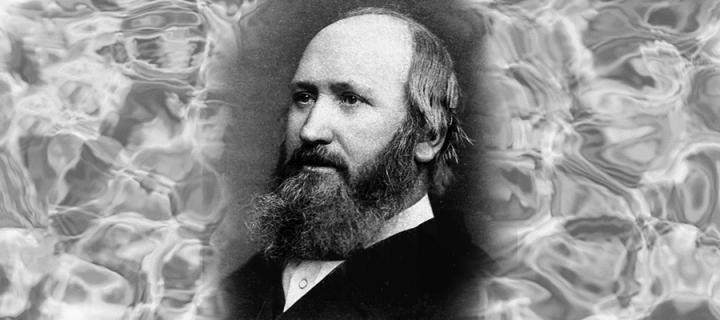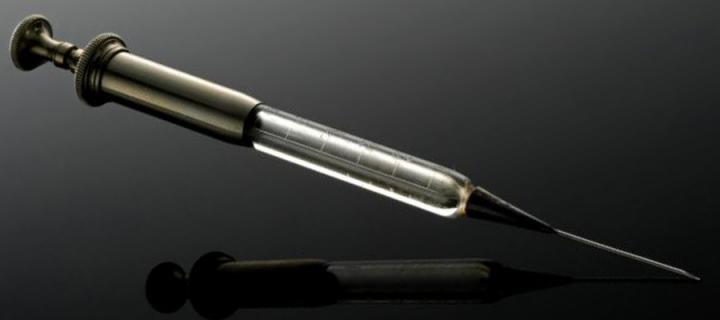Alexander Wood (1817-1884)
The Scottish physician and President of the Royal College of Physicians of Edinburgh from 1858 to 1861. He invented the first true hypodermic syringe that has made today's mass vaccinations possible.

Early years and Edinburgh
Alexander Wood was born in 1817 in Fife, the son of a local doctor. The family moved to Edinburgh’s New Town in 1821 and Wood eventually enrolled at the University of Edinburgh in 1832 where he studied arts and medicine.
He graduated with the MD in 1839 and established his own private medical practice in the New Town. He also began lecturing at the Extramural Medical School from 1841.
But it's his 1850s invention that would lead him to notoriety.
The syringe

Inspired by the work of fellow Edinburgh alumnus James Young Simpson around anaesthesia, Wood became fascinated with finding ways to relieve localised pain.
In 1853 his research led him to taking the earlier invention of a hollow needle and adding a plunger. He then developed this idea further into the first all-glass syringe with fine-bone needle that allowed doctors to estimate a dosage based on the amount of liquid observed through the glass, thus allowing for smaller measured doses to be administered.
His first patient was an 80 year-old woman who suffered from a form of neuralgia, which he successfully treated by injecting her area of discomfort with morphia (morphine dissolved in sherry). Wood had invented and used the world’s first hypodermic syringe.
Popular
By coincidence, Charles Gabriel Pravaz, a French surgeon who had had no contact with Wood, reported his very similar invention in the same year, shortly before he died. But while Wood's device was made of glass and featured a plunger, Prava's invention was composed of silver and used a screw to push medicine into the body; and while Wood performed his trials on humans, Prava chose sheep.
Wood's treatment by subcutaneous (as he referred to it, the term ‘hypodermic’ wasn’t coined until decades later) injection rapidly became popular in Britain.
His instruments were advertised as "Dr Alexander Wood's narcotic injection syringes", and the needles used in today’s medicine follow the same design.
Other work
Wood went on to play a prominent role in Scottish medical politics through his work as President of the Royal College of Physicians of Edinburgh, including persuading the college to admit non-graduates into its licensing examinations, and campaigning for legislation pharmacy, the registration of births and marriages, and sanitary reform. He also argued for the official rights of the Edinburgh Extramural School of Medicine, which would have later implications for women wishing to study the subject.
Wood was also elected to the Edinburgh Police Commission and chaired the acting committee of the Association for the Improvement of the Condition of the Poor, a charity that provided food and work for the unemployed.
Wood died in his home in February 1884 after a short illness, and is buried in Edinburgh's Dean Cemetery. He left behind his wife, Rebecca Massey (incidentally the subject of a false rumour that she was the first known morphine addict after injecting herself using her husband's invention), and the lasting importance of his hypodermic syringe.
Additional sources
Alexander Wood - Wikipedia entry (external)
Royal College of Physicians of Edinburgh - biography (external)
BBC News: The invention that made mass vaccinations possible (9 March 2021 - external)

